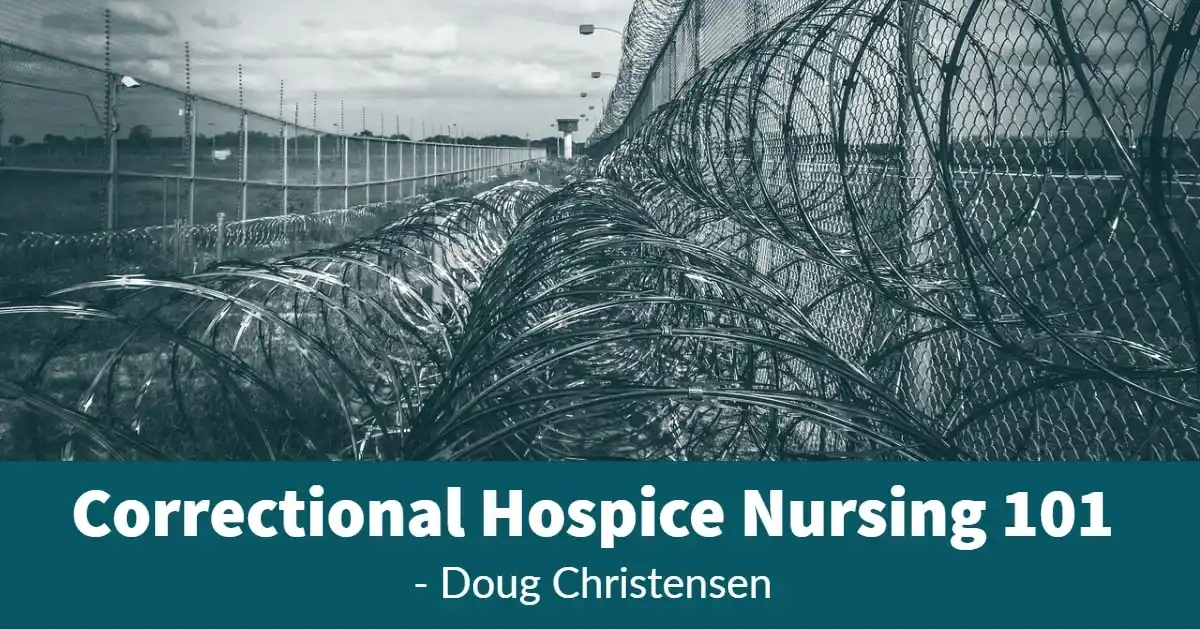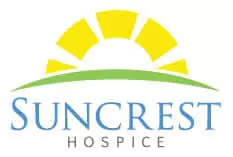I was first introduced to a form of hospice nursing during my first year as a Registered Nurse in the winter of 2009. I was working for a nurse staffing agency out of Colorado Springs, picking up any shifts they had available. I didn’t have a lot of employment options. The only steady work I could find was in the State prison system out at the Denver Women’s Correctional Facility, working graveyard, as those are the most challenging shifts to staff. But I didn’t care. It was not only work, but an opportunity to gain valuable hospice nursing experience in a setting that, to my surprise, utilizes a vast number of very compassionate, supportive, and caring individuals from all aspects of correctional life and lifestyles.
My assignment was to work in the infirmary, which is the prison’s version of a skilled, assisted, and long-term care facility all wrapped into one. It houses offender men and women in all stages of health and recovery, including those with terminal diagnoses who require palliative care and hospice management at the end of life.
The infirmary is located deep within the complex. It’s a locked unit, better known as a “pod,” staffed with a regiment of correctional officers who oversee the night security and safety of the facility. The infirmary serves both men’s and women’s prisons, so it had a mixture of male- and female-only rooms. It was mandatory that nurses had security escort during their rounds; male nurses always accompanied a female correctional officer when interacting, assessing, or treating female patients.
“The infirmary is located deep within the complex. It’s a locked unit, better known as a pod.”
It could get quite noisy at any time of day or night, as heavy metal doors clanged open and shut, loud speakers voiced commands and instructions to visitors, chains rattled as they were put on or taken off. To add to the melee, generally there was a patient or two in some form of acute psychotic state, as the facility housed some of the most seriously ill, mentally challenged patients, especially those prone to self-harming behaviors. It could often be a cold and unfriendly setting.
Patient rooms were small, many with only enough room for a hospital bed, sink and toilet. But if you’re lucky, you might get a room with a television that actually received a decent signal and picture. Even more rare was the room that had a working remote.
“Part of my “correctional awakening” was the introduction of the Offender Care Aides”
I remember my first graveyard shift very well. I had to go through an extensive security check and many locked doors before finding the infirmary. The nurse’s station was located directly inside the infirmary pod. It was a secured room with windows that looked out over the entire pod of locked patient rooms. Behind and above the nurse’s station was security control; they had a bird’s-eye view of the entire infirmary pod and nurse’s station, manned by two correctional officers at all times.
I was introduced to Kathy, RN, the night supervisor. Kathy had been a corrections nurse for many years, and I admired her commitment to serving this population. She was a wonderful inspiration and helped teach me the ropes of correctional hospice nursing. When I took the report from Kathy, she introduced me to a patient who I’ll refer to as “Joe”. Joe was on hospice status. He was in his late 70’s, I believe, laying in a hospital bed, in a state of, what we call, End Of Life (EOL) transition. He was unconscious and stayed that way during the entire shift.
I assisted in rounding on Joe, making sure he was clean and comfortable. He was in one of the smallest single rooms, with dingy, white walls that were carved out with a single light bulb hanging from the ceiling. He had an IV attached to his right arm for hydration and comfort purposes, as he was no longer able to swallow. I learned that Joe had been in the infirmary for about a week, transferred to Denver from another correctional facility which didn’t have the medical resources available to manage his acute decline that had placed him onto hospice status.
Joe had no family, no friends, no home or comfortable environment with which to leave this world. He most likely spent his adult life in and out of jails and prison, and may never be remembered in a positive way. But I still remember this man because he received some of the most caring, compassionate, and palliative nursing care that he likely had ever received in his life, until he came to the infirmary. It can be assumed Joe led a life of hardship, and paid his dues to society for whatever crimes he committed. His nurses and providers understood this, and, despite the questionable lifestyle that brought him to this circumstance, they made sure he remained comfortable and cared for to the very end, leaving this world in the most dignified and peaceful way possible.
That night I learned this valuable lesson: Even in the prison system, full of men and women who’ve committed some of the worst crimes against humanity, society’s least-trusted individuals, are patients who deserve to receive an above-level quality of care, and compassion from nurses and providers when placed on hospice status.
Part of my “correctional awakening” was the introduction of the OCAs, or Offender Care Aides; you might say they are the correctional version of a CNA. This is a class of individuals, both male and female, who are still serving their sentences, but have chosen to complete a CNA course. They have obtained the necessary training, education, and certification to perform all the cares and responsibilities very similar to Suncrest aides. Yes, these are hardened criminals caring for fellow hardened criminals. They are provided permanent paid positions, with a 40-hour work week, but the wage is a pittance compared to the value of these individuals.
“Once on hospice status, some of the rules of incarceration are relaxed.”
Another valuable lesson came from that night: Care and compassion doesn’t only come from the nurses and providers, but also from the OCAs. These offender caregivers possess the same ability, competency, and desire to care for their own. Their knowledge and understanding of the patients could rival that of the most experienced nurses, including myself. They were very skilled and gave me valuable instructions when assisting with the repositioning and caring of Joe. In fact, they were valuable assistants with all the patients under my care, not only helping at the bedside, but performing many other duties throughout the day and night.
A few months after that experience, I hired on with the CDOC and became a corrections nurse, working in both men’s and women’s prisons for five years. I had the honor of working in the infirmary alongside some of the most professional and knowledgeable nurses, many with hospice backgrounds, as we cared for the patients who came onto hospice status. It was not our job to judge these patients, but to manage their symptoms in the most caring, compassionate, and palliative form possible.
Once on hospice status, some of the rules of incarceration are relaxed; patients are allowed more frequent family visits (immediate family only), allowing family to bring in approved snacks and comfort foods, if the patient is able to tolerate them. Clergy is allowed to visit as well, and they often did. Pain and sedating medications would be prescribed or increased to manage EOL symptoms of pain, discomfort, and agitation. Patients would also be given their own room and always one with the best television reception and working remote control. Privacy was respected, even by correctional officers, who were extra quiet when performing rounds.
Once a hospice patient dies, the room basically becomes a crime scene until the warden and county coroner have been notified, and the death certificate signed. Once cleared, the body is then released to family or back into state custody, as many patients have no family to put the deceased to rest, as was the case with Joe. But, as in many cases, the infirmary nurses had become Joe’s surrogate family, and they treated him as such, with dignity and kindness.
I learned so much about hospice nursing, care, and compassion during those years in corrections. One wouldn’t expect that to happen in such a notoriously uncaring and uncompassionate environment, but it has taught me much about looking for lessons and growth opportunities in unlikely places
Sold Out hospice stories on our hospice blog
Please feel free to contact us with any questions regarding hospice care


